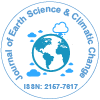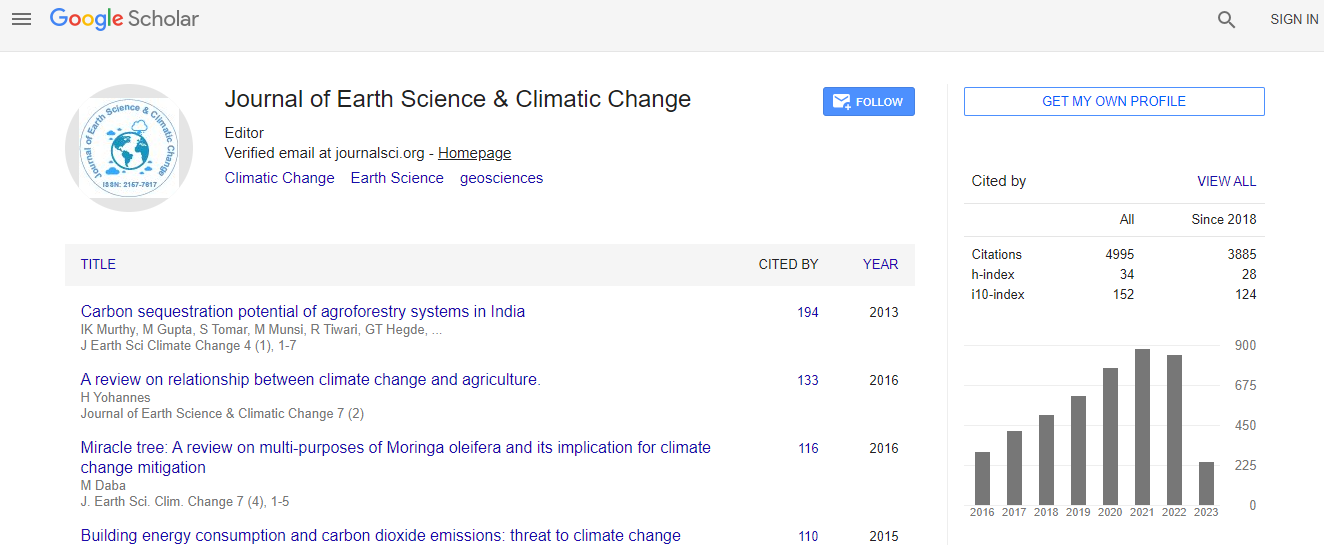Our Group organises 3000+ Global Conferenceseries Events every year across USA, Europe & Asia with support from 1000 more scientific Societies and Publishes 700+ Open Access Journals which contains over 50000 eminent personalities, reputed scientists as editorial board members.
Open Access Journals gaining more Readers and Citations
700 Journals and 15,000,000 Readers Each Journal is getting 25,000+ Readers
Google Scholar citation report
Citations : 5125
Journal of Earth Science & Climatic Change received 5125 citations as per Google Scholar report
Journal of Earth Science & Climatic Change peer review process verified at publons
Indexed In
- CAS Source Index (CASSI)
- Index Copernicus
- Google Scholar
- Sherpa Romeo
- Online Access to Research in the Environment (OARE)
- Open J Gate
- Genamics JournalSeek
- JournalTOCs
- Ulrich's Periodicals Directory
- Access to Global Online Research in Agriculture (AGORA)
- Centre for Agriculture and Biosciences International (CABI)
- RefSeek
- Hamdard University
- EBSCO A-Z
- OCLC- WorldCat
- Proquest Summons
- SWB online catalog
- Publons
- Euro Pub
- ICMJE
Useful Links
Recommended Journals
Related Subjects
Share This Page
In Association with

Utilizing the growing trove of global sensor data
5th International Conference on Earth Science & Climate Change
David Knight
Terbine, USA
Posters & Accepted Abstracts: J Earth Sci Clim Change
Abstract
The constant forward march of Moore��?s law is enabling sensor data to be collected at an unprecedented rate, setting us up for a Renaissance in Earth Sciences. However, today, the majority of data sets collected are siloed and or discarded after analysis and a wealth of global data valuable to many fields sits untapped. Much like the early days of computing, when those developing applications would also have to develop the protocols to connect their applications to devices and systems, earth scientists seeking to leverage data collected in other fields today often need to also develop the means to access, qualify, analyze and visualize it, tasks unrelated to their research scope. How can earth scientists make use of the massive body of data being collected about the physical world? This presentation shows how, as the data movement matures, an infrastructure is building around it to address collection, curation and analytics, the key components that will enable researchers and implementers to access data troves outside of their line of funded research without having to develop the tools themselves. Presenter David Knight will explore and define the role of each of these components and provide examples of cross correlated analysis that centralizing them enables for Earth Sciences.Biography
Email: dknight@terbine.com

 Spanish
Spanish  Chinese
Chinese  Russian
Russian  German
German  French
French  Japanese
Japanese  Portuguese
Portuguese  Hindi
Hindi 
